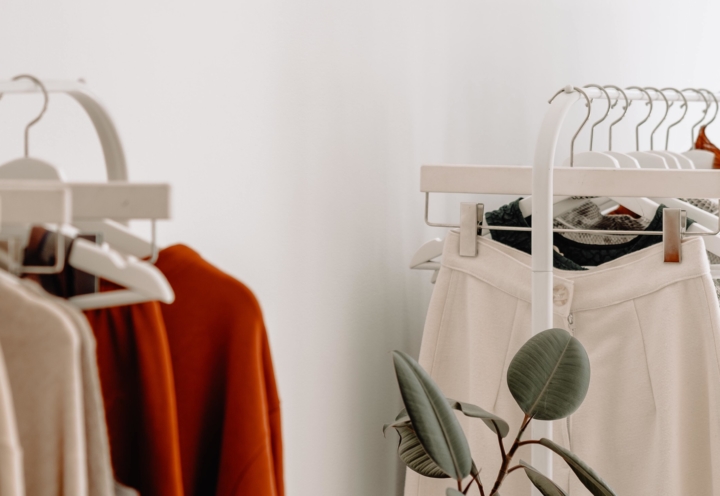We sat down with Srishti Dhawan, Head of Supply Chain at SupplyCompass, and Liv Khan, Co-Founder of The Lacuna Collection, to ask the top supply chain and finance questions when it comes to managing a fast-growing fashion brand. Get a glimpse into best practices on managing global supply chains, cost-saving tips, working with international manufacturing partners, keeping finances in check, and more.

How can I reduce sampling costs and get samples right the first time?
Srishti: There are a few things I’d recommend:
Have absolute clarity
The number one factor in reducing sampling costs sits with the brand, not the factory. Brands have to be prepared with a clear strategy, range plan and detailed specifications before going into sampling. In my 13 years of experience of working with retailers and supply chains, I have seen how a lack of clarity on designs results in a back and forth in sampling, cost negotiations and longer lead times.
Go digital-first
If you’re waiting for your specifications to turn into a physical sample to understand how your designs will look, the chances are you will waste a lot of time. Most brands use 2D CAD designs to understand what their designs will look like; however, with emerging technologies you can create digital samples first with the exact fabric draping and details you require. This helps understand the fit which typically takes time to get right. Going down this route means fewer surprises when you see your physical samples.
When your first sample is finished at the factory, schedule a video call with your manufacturer and go through the sample with your technical specifications. It is easier for a factory to fix issues before the sample leaves the factory, thereby avoiding unnecessary courier costs and re-making of a new sample.
Be Specific
Your technical specifications need to be detailed and must include requirements around materials, components, dimensions, packaging and labels. If you’re more on the creative side with less technical knowledge, I would recommend carrying out a risk assessment of your designs with your manufacturers – they can highlight areas where changes will be required to make your designs more production feasible. The right time to have this conversation is when you send your technical specifications to the factory and after your first sample has been produced.
Track all communication
This is probably the most vital point once you’ve received your samples and are sending back comments to your manufacturer. Most brands use Excel, Powerpoint and emails to track communication with factories. This can lead to errors in sampling and production. We recommend using a platform like SupplyCompass to track all communication and give access to every stakeholder across the supply chain to a single version of the truth.
How do I work with new partners more digitally, with the aim to reduce travel costs and get around travel restrictions?
Srishti: In the light of COVID-19, technology has come to the forefront as a saviour. We don’t quite yet know when travel restrictions will ease and it will be safe to visit your manufacturers, especially if they are overseas. Think of the reasons why you visit your manufacturer: to build and develop trustworthy relationships, see their showrooms, get assurance on quality controls and see if their unit is set up to certified quality standards. It is possible to carry out video conferences to build trust and get a virtual tour of the showrooms and sampling floors. Factories can also show their product development virtually through video conferencing and send across samples you want to see in person. For more in-depth auditing, third-party audits can be carried out by local teams.

Should I move my production overseas? If so, how do I guarantee quality, quantity and cost?
Srishti: This depends on your current business set up and your future plans. What is the main reason for you looking to produce overseas? For most brands, the answer lies in the cost equation. However, moving production without a plan and the right strategy in place can be costly. We hear stories from brands of how they’ve moved production overseas and it has been a nightmare for them. This happens when proper homework hasn’t been done and the brand hasn’t spent the time setting themselves up for success.
Manufacturing overseas means getting access to world-class manufacturers that supply to some of the leading retailers around the world; my family’s business in India is one of them. When I worked there, I noticed that new and emerging brands can come across as ill-prepared which can waste a lot of time for these factories, and therefore don’t get access to these units.
To move production overseas, brands need to set themselves up appropriately, i.e. have a strong future-looking strategy, have thought through their supply chain strategy (e.g. sustainability goals, compliance requirements), be confident of the annual production output they are planning to place, have detailed technical specs for their designs and a process in place for sampling and production. If this is your first production run overseas, consider working with partners like SupplyCompass who have on-ground technical teams to assess factories, quality check your samples and production, and have spent time building long-term trustworthy relationships with their manufacturers.
Are there any benefits to working with multiple manufacturers?
Srishti: This depends on a number of factors. What are your reasons for working with multiple manufacturers? Are you working across multiple product categories? Is it for getting better cost prices? In my experience, building long-term trustworthy relationships with your manufacturers should be your number one priority. The old-practice of traditional retailers moving production from one manufacturer to the next based on cost will no longer work in the new world order.
We need more collaborative relationships to bring balance to brand-manufacturer relationships. At SupplyCompass, we nurture our relationships with our manufacturers; we give them transparency on the business we bring them, we help them upskill where required and we introduce new innovative tools to help them thrive in a changing world. We are confident that future supply chains will become more humanised, and work for people, planet and profits.
What are some of the hidden costs when managing my supply chain that I should be aware of?
Srishti: One of the biggest areas that has been overlooked in these conversations is the cost of lack of or delayed decisions from the brand. When you are working with your manufacturer, stick to the critical path on your side. Give timely approvals and be clear on the product range you are building. Late approvals, changing designs frequently and working without technical knowledge can be highly costly. This means multiple sampling rounds, re-submission of strike-offs and lab dips before reaching a stage production can be approved.
Make manufacturers part of the process, ask for risk assessments during the technical specifications download (if you don’t have the knowledge), work with them through the fit comments and be absolutely certain about the designs you are making. Before starting your sampling round, give manufacturers the transparency of the sampling hit-rate you are hoping to achieve with them, especially if you are working with multiple manufacturers as trust is a two-way street.
How can I ensure factories are following health and safety measures when they do reopen?
Srishti: Speak to your factories on the measures they have implemented to re-open and look at the ILO (International Labour Organization) or OSHA requirements for health and safety. There are several technologies that help brands gather this data from their manufacturers.
For example, SupplyCompass has partnered with Inspectorio to carry out factory-level inspections to ensure that our network is set up in the right way from a health and safety perspective. We are advising our factories on the measures they need to put in place and are providing guidance and support to ensure these can be met.

How do I manage different currency payments when working with different suppliers internationally?
Liv: Fortunately, there are now a range of payment suppliers and solutions to reduce costs and complications associated with working across borders in multiple currencies. Disruptor banks such as Tide and Starling offer euro bank accounts which can be applied for in-app. Revolut also allows you to hold, exchange, send and receive funds in 28+ currencies at the real (interbank) exchange rate. If you use a traditional bank, Transferwise is a quick and secure method for one-off payments and will guarantee a more transparent and competitive fee structure than those you would find with high street banks.
Bear in mind though that your bank may set a limit per day, week or transfer. For regular and higher value transfers, it might be worth speaking to a currency risk management service to ensure that you are getting the most favourable rates at the right time. It is important to forecast what your company will be spending over a 12-month period and in which currencies – your margins need to allow for any major currency fluctuations. This is something to consider when selecting suppliers abroad.
For UK companies, don’t forget that your currency purchases need to be reflected in GBP on your invoices and accounts. You can use published rates on xe.com or oanda.com to calculate your exchange rates.
Can you negotiate payment terms with manufacturers or suppliers?
Liv: Yes! As Srishti has already explained, building strong relationships with your suppliers is paramount. It’s a very similar relationship to brand/retailer. At first, it’s difficult to negotiate favourable terms, as the supplier is not familiar with your way of working or your reliability as a creditor. You may be offered a standard 50% deposit, 50% COD. After several production runs or seasons and assuming you have paid on time and in full, you may be in a better position to reduce the upfront deposit. Or maybe you would prefer to offer a higher deposit for a discount on the total invoice value. Either way, when it comes to your cashflow supplier payments need to be prioritised, forecasted and budgeted.
There are also a few factors that may limit the supplier’s ability to negotiate:
- Size of supplier
- Upfront costs to the supplier (are they purchasing materials on your behalf?)
- The volume of production (are you hitting MOQ?)
- Region-specific standards

How can I make my shipping process more efficient and save costs?
Liv: I’d recommend the following:
Planning in advance
The faster the turnaround that you require on the shipping, the higher the cost. Therefore, where possible it is always better to choose a slower shipping service. For example, if you had a large import from China, it would be better to send this on a sea freight (which could take up to 6 weeks) rather than pay a premium to have it shipped on an express service of 2-3 days. Similarly, if you had several suppliers based in China it would be more cost-effective to organise a single bulk collection rather than working with several smaller shipments (also reducing carbon footprint).
Look at all carrier options
How often are you shipping? Where are you importing from and exporting to? How are you transporting goods? How quickly do your shipments need to be moved? These are the questions that should help to shape your partnership. I would recommend speaking to all major couriers—DHL, FedEx, UPS, Royal Mail as well as freight forwarders and aggregators such as Parcel2Go to select the most cost-effective and efficient service. You want to create a very tailored strategy specific to your needs and expectations.
Understand the paperwork for each destination
One element of shipping that is often overlooked is the paperwork required to ship across borders. This can very easily become a huge cost on your business and consume a lot of time, if not done properly! Missing an important document (such as a commercial invoice) could result in your shipment being held for days or weeks and you could be charged for this storage. Be sure to read the customs, duties and tax regulations for each region you work with. You can always contact any one of your shipping partners to double-check requirements for clearance.
Negotiate terms with your suppliers
Be sure to negotiate and confirm shipping terms with your supplier early on in your discussion. Most likely your suppliers will already have shipping accounts and will have access to competitive rates. Are they able to fulfil deliveries and add the total cost to your final invoice (DDP)? Maybe they are willing to organise and pay the shipping costs but you will be responsible for the clearance and customs payments (DDU)?
When shipping out to your customers—it is also important to consider whether or not the cost will be passed on? Will you charge a flat rate or flexible rate according to the delivery region? It’s important to have some level of shipping strategy in place to maintain a margin and avoid delays or return costs.
What do I need to think about when importing from a new country?
Liv: The main things to consider are:
Classification of goods
The HTS is a standardized coding system used in international trade. As an importer/ exporter, you are responsible for the proper classification and declaration of your goods. If you are shipping finished garments you need to include full HTS codes as well as information about the garments i.e. 50% polyester, 30% cotton and 20% spandex. There is a unique fee associated with each HTS code, which is something else to consider and include as part of your budget.
Communication
Is there a time difference? Is there a language barrier? How quick are you able to contact via email/phone? How do you plan to QC your production if you are unable to visit? Before choosing a new supplier abroad, make sure you are confident in the level of contact and communication you are able to achieve!
How will COVID-19 provide an opportunity to ‘reset and reshape’ my production?
Liv: The recent pandemic has, for the first time, brought the entire fashion industry to a sudden halt. Brands and retailers have been left with enormous volumes of unsold ‘out-of-season’ stock and with consumer confidence low, an economic downturn of some form is inevitable.
With uncertainty looming, brands are having to re-evaluate their full supply chain, slowing down and carefully re-aligning the processes of production and sale/demand and supply. For brands that do not survive, there opens up opportunistic space for new, more agile brands to implement sustainable practices, mitigating future risk and feeding into a consumer culture that is less inclined towards ‘fast fashion’.
For now, manufacturers and suppliers have availability and are willing to open a conversation. It’s the best time to review and streamline your supply chain.
The Lacuna Collection is currently actively collaborating with various industry partners to formulate sustainable solutions to address the fallout of the economic downturn across production, shipping, sales and finances.
About the companies
SupplyCompass is a product development and production management platform that enables fashion brands and manufacturers to produce better, together. Our cloud-based software is transforming the fashion industry by digitalising global supply chains and making sustainable sourcing easy and cost-effective for brands and every player in the supply chain.
The Lacuna Collection builds, scales and funds luxury brands. They provide supply chain and invoice finance, as well as facilitating production, distribution and sales for over 40 brands each season. The brands in their portfolio are stocked by global retailers such as Net-a-Porter, Farfetch, Matches Fashion, ASOS, Zalando and Urban Outfitters.


